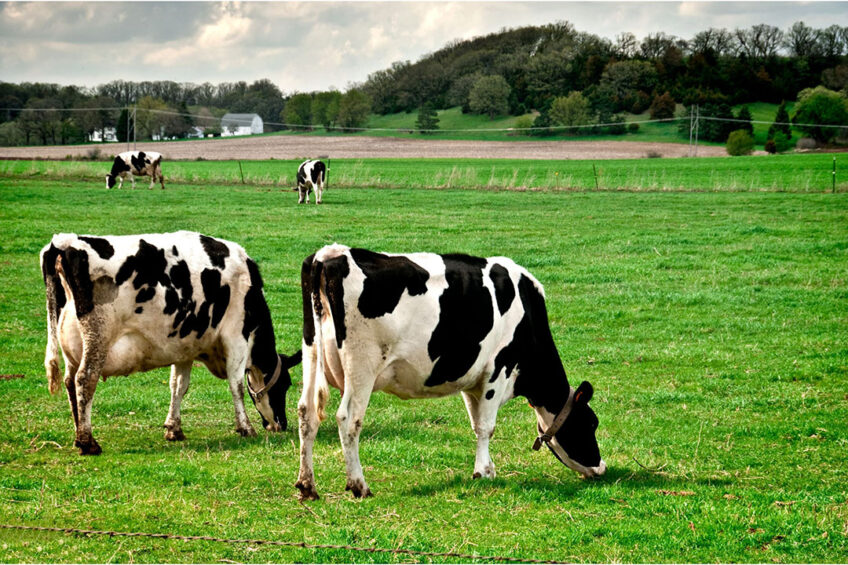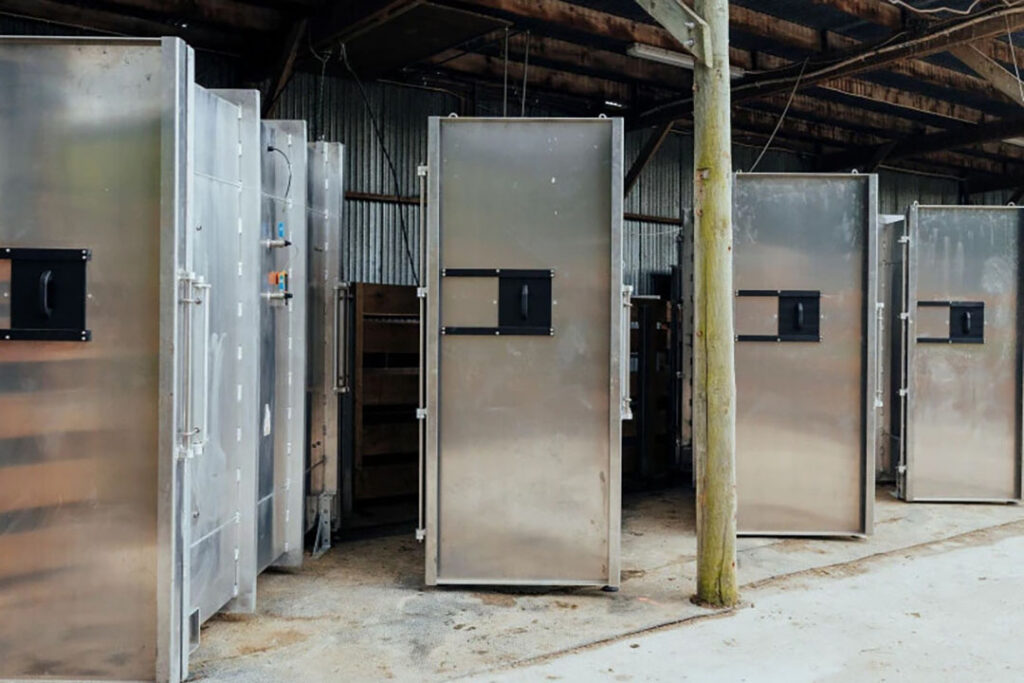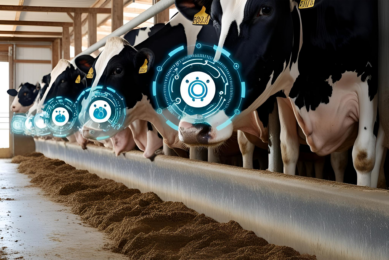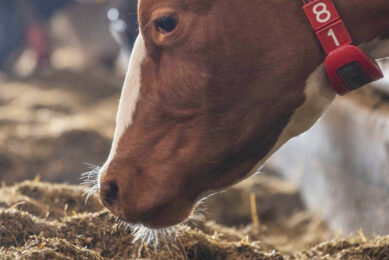New portable tech to reduce cattle emissions on-farm

Following a similar successful project with sheep, New Zealand’s AgResearch unveils a ground-breaking portable technology to measure methane emissions from cattle ‘on-farm’ that will reinforce efforts to reduce the climate change impact on livestock in New Zealand and overseas.
Methane is a potent greenhouse gas emitted by ruminant animals, and its reduction targets are included in climate change legislation. Breeding animals that naturally emit less methane is one way of achieving reductions without cutting stock numbers. AgResearch has already proved breeding of low-emitting sheep is possible and believes low-methane dairy cow genetics are expected to be in the market in the next few years. Technology that supports simple and efficient quantification of methane is more than required.
Portable Accumulation Chambers
AgResearch’s Portable Accumulation Chambers are the new technology designed to be transported by road to farms or central locations where the cattle can be quickly and efficiently tested for how much methane they naturally emit. These measures will help farmers understand what the climate change impact is on their herds and individual animals and assist in breeding lower-emitting animals.
Like the portable accumulation chambers already in use by AgResearch for sheep in New Zealand, the portable cattle chambers provide flexible options on top of testing methods already in use, such as fixed “respiration chambers” which require transportation of animals to a fixed location and spend extended periods in the chambers.
“This is the first use of a portable system like this to measure methane emissions from cattle,” said AgResearch senior scientist, Dr Suzanne Rowe. “We’ve built a relatively simple chamber that can go where the animals are. The cow walks into the chamber and we capture all the gas that’s emitted from that animal for just 1 hour. We then use this data to rank animals according to their emissions. We’ve been doing this for many years with sheep, with thousands of measures on farms around New Zealand, and we’ve been able to prove that is an accurate and effective method.”
It is emphasised that when using the portable chambers, for both cattle and sheep, the welfare of animals is carefully monitored and in the rare event they become stressed they are removed from the chambers.
“We think the portable cattle chambers will be an important addition to the toolbox for farmers, in addition to the fixed respiration chambers. We will use the portable chambers alongside the feed efficiency monitoring we already do, but there is also preliminary evidence in sheep that the measures taken in the cattle chambers may provide us with some important insights on feed intake and evaluating feed efficiency, as well as methane emissions,” she said.

International focus
Rowe highlighted that the chambers offer benefits not just for New Zealand, but also for other nations that farm livestock. “Our portable sheep chambers are now in use in other countries such as the UK, supporting their efforts to reduce farm emissions. We are looking forward to trialling the portable cattle chambers overseas, particularly in countries where they have extensive grazing systems and don’t have the infrastructure such as fixed respiration chambers that we are fortunate to have in New Zealand.”
Reports show that, besides their operating presence in New Zealand, the portable sheep chambers have been exported overseas to countries such as the UK, Ireland, and Norway.
Upon completion of their research proving that sheep can be bred to produce less methane without sacrificing productivity, AgResearch had this to say: “We are leveraging our knowledge and expertise around low methane-emitting sheep for research into breeding low methane-emitting cattle.”
Partnership key to successful research
For their sheep breeding project, AgResearch has proven partnership is key to successful research. With the support of the industry through the Pastoral Greenhouse Gas Research Consortium and the government via the New Zealand Agricultural Greenhouse Gas Research Centre, the AgResearch scientists spent over a decade working on their research and were able to identify genetic differences which influence how much methane an individual sheep produces.
Rowe mentioned that in the development of current cattle chambers, AgResearch has partnered with several organisations. “The use of the portable chambers and development of low methane genetics is part of a wider nationwide effort with partners such as New Zealand Agricultural Greenhouse Gas Research Centre, LIC [Livestock Improvement Corporation], CRV, Pāmu, Beef + Lamb New Zealand and the Ministry for Primary Industries to support farmers in reducing their emissions.”
The partners brought their expertise together to produce a portable technology to measure methane emissions from cattle. The focus of some of the partners is as follows:
- Ministry for Primary Industries helps to seize export opportunities, improve sector productivity, increase sustainable resource use, and protect the country from biological risk.
- The New Zealand Agricultural Greenhouse Gas Research Centre is a partnership between New Zealand’s leading agricultural greenhouse gas research providers that provides practical solutions for New Zealand farmers to reduce emissions, contributing world-leading science to the international climate change response.
- The Livestock Improvement Corporation focuses on providing dairy farmers with precision genetics and technology tools to improve their herds in a sustainable manner. Besides their partnership with AgResearch in development of the cattle portable chambers, the corporation’s current methane research programme is investigating the link between methane emissions from bulls and their genetics in the hopes of providing dairy farmers with the ability to breed more climate-friendly cows that produce less methane. By 2026, the target is that all their artificial breeding bulls can have a methane breeding value, allowing farmers to select bulls that will produce low methane-emitting cows.
The Portable Accumulation Chambers are expected to play a crucial role in all the efforts to reduce emissions from dairy cattle and other ruminants, in New Zealand and countries with extensive grazing systems that also lack sufficient infrastructure such as fixed respiration chambers.
The Dairy Global Newsletter
Sign up for our newsletter and receive all our need-to-know content three times a week.
Join 13,000+ subscribers
Subscribe to our newsletter to stay updated about all the need-to-know content in the dairy sector, two times a week.










